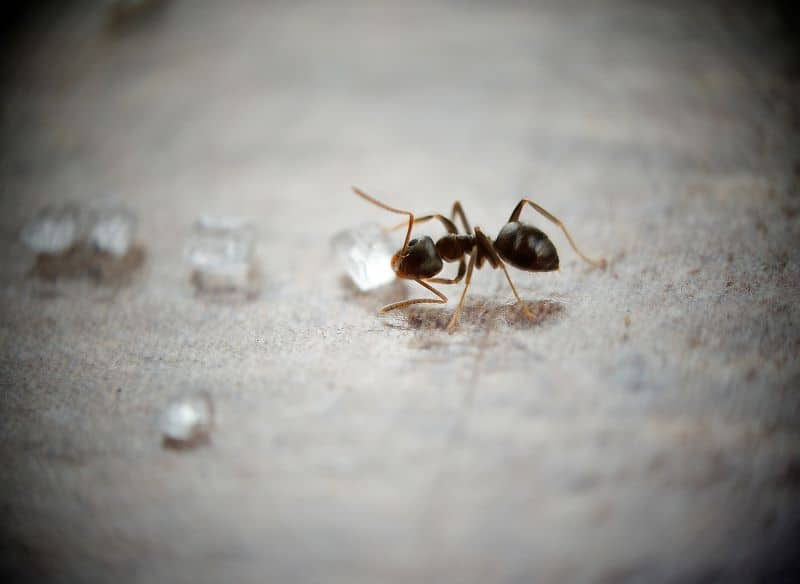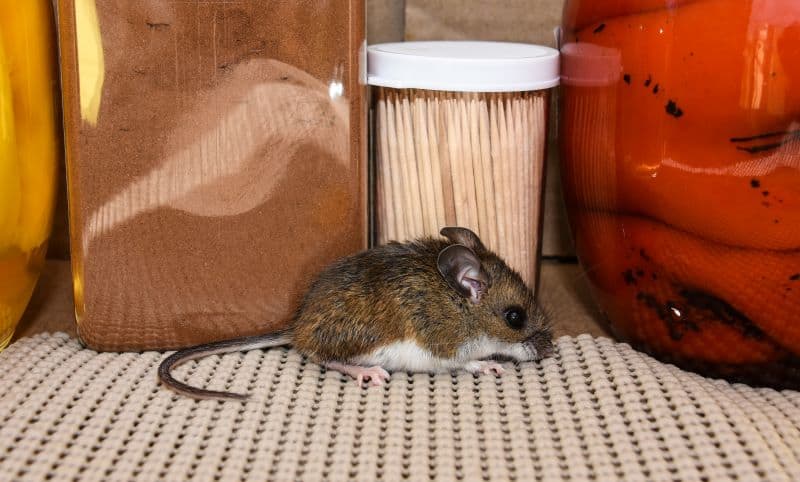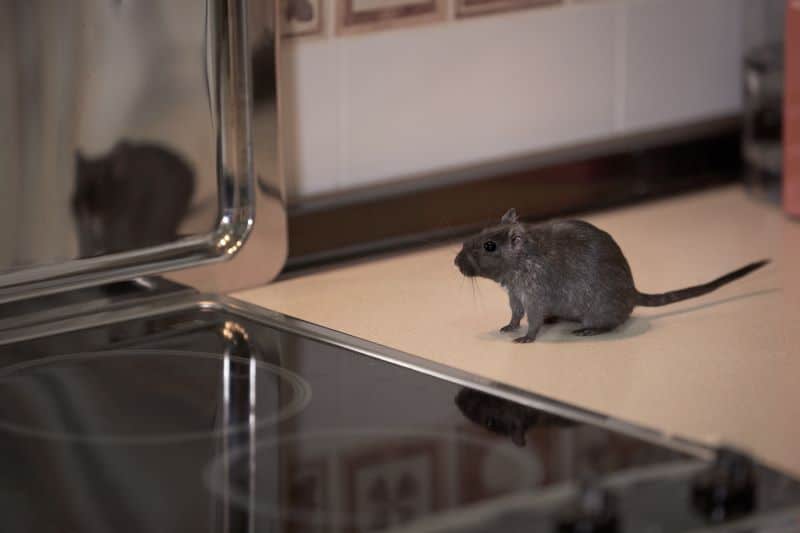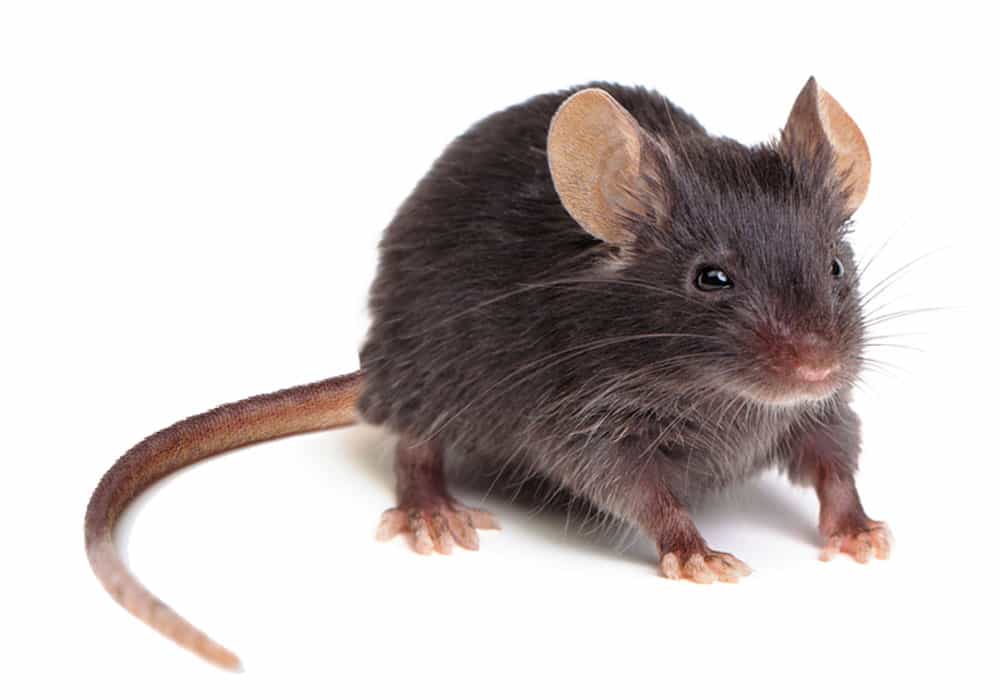Sugar ants, or odorous house ants, are a pervasive problem for homeowners in the Pacific Northwest, including in La Center, WA. Infestations are easily acquired but challenging for homeowners to eliminate on their own. Although sugar ants do not excavate wood like carpenter ants, their presence in and around the home can create substantial problems. This article explores the various issues caused by sugar ant infestations, discusses the lifecycle of these pests, and emphasizes the importance of seeking help from a professional pest control provider, such as Aspen Pest Control, to manage sugar ant problems effectively.

The Potential Impacts of Sugar Ant Infestations
Sugar ants can wreak havoc in homes, posing many challenges for homeowners. From the presence of unsightly trails invading kitchen countertops and stored food items, their presence can be highly disruptive. Sugar ants may contaminate human and pet food, potentially leading to health hazards for your family and beloved furry companions. Moreover, individuals with allergies may experience adverse reactions upon exposure to sugar ants and their waste products. Beyond health concerns, sugar ants can inflict property damage by nesting in structures and compromising their integrity over time. As if these issues weren’t troublesome enough, a sugar ant infestation may inadvertently attract predators indoors, exacerbating the pest problem. Confronted with the resilience of these pests and the difficulty of eradicating them without professional assistance, homeowners face the daunting task of reclaiming their spaces from these persistent invaders. In this section, we’ll delve into these challenges, shedding light on the complexities of dealing with a sugar ant infestation.
1. The Nuisance Factor:
The presence of unsightly trails of sugar ants in the home can be highly disruptive and unpleasant for homeowners. Sugar ants may invade kitchen countertops, pantries, and other food storage areas, causing frustration and inconvenience. Additionally, the sight of swarming ants can be unsettling and may heighten concern about the extent of the infestation.
2. Food Contamination:
Sugar ants are attracted to food sources, particularly sugary and carbohydrate-rich items. Once they infest a home, they can quickly invade food stored in pantries, cabinets, and countertops. While sugar ants themselves are not harmful, their presence can lead to food contamination. Ants may walk over surfaces, leaving behind bacteria or contaminants from other areas that can harm people and pets.
3. Pet Food Contamination:
Like human food, pet food can also attract sugar ants. If sugar ants infest areas where pet food is stored or where pets eat, it can lead to that food being contaminated. Contaminated pet food not only poses health risks to pets but also potentially attracts other pests, leading to further infestations.
4. Allergic Reactions:
Exposure to sugar ants and their excrement can provoke allergic reactions in some individuals. These reactions may include skin rashes, itching, sneezing, and respiratory issues, particularly in sensitive individuals or those with pre-existing allergies.
5. Property Damage:
Besides contaminating food, sugar ants can cause property damage by nesting in wall voids, insulation, and wooden structures. Over time, their activity may weaken structural integrity and lead to costly repairs. Furthermore, if a sugar ant infestation is left unchecked or becomes particularly severe, there is a possibility that they could damage electrical wiring over time, posing a fire hazard.
6. Attracting Predators Indoors:
A sugar ant infestation can attract other pests and predators indoors. For example, if sugar ants are present in large numbers, they may attract spiders, centipedes, and other predatory insects that feed on them. This can escalate the pest problem and create an even more significant nuisance for homeowners.
7. Difficulty in Eradication:
Sugar ants are resilient pests that reproduce rapidly and establish extensive colonies. Attempting to eradicate them without professional assistance can be challenging, as DIY methods may yield only temporary relief or fail to address the infestation’s root cause. Without proper intervention, sugar ant populations may rebound quickly, leading to ongoing frustration for homeowners.
Overall, a sugar ant infestation can have significant implications for homeowners, ranging from health risks and property damage to the nuisance of dealing with persistent pests. Seeking professional pest control services is often the most effective way to address sugar ant infestations comprehensively and prevent their recurrence.
Decoding the Sugar Ant Lifecycle: Key Insights for Effective Control
Understanding the intricacies of the sugar ant lifecycle is crucial for effective sugar ant extermination. From the initial egg stage, where tiny, white ovals are laid by the queen in late winter to early spring, to the subsequent larva stage, characterized by legless, grub-like larvae cared for by worker ants, every phase offers opportunities for intervention. As pupae undergo metamorphosis into adult sugar ants during late spring to mid-summer, and these fully functional adults establish colonies both indoors and outdoors, it becomes imperative to comprehend their seasonal activity patterns and preferred habitats. Worker ants tirelessly forage year-round, while queens focus on reproduction, and males emerge in late summer for mating flights. By delving deeper into each stage, La Center homeowners can gain valuable insights into when and where sugar ants are most active, empowering you to choose pest control measures tailored effectively to the specific characteristics of these persistent insects. Let’s explore the lifecycle of sugar ants in the Pacific Northwest, shedding light on the importance of seasonal awareness and targeted interventions in safeguarding homes against unwelcome infestations:
1. Egg Stage:
- Appearance: Eggs are tiny, white, and oval-shaped, often clustered together in batches.
- Seasonal Activity: In the Pacific Northwest, egg laying typically begins in late winter to early spring, around February to April, when temperatures start to rise.
- Habitation: The queen usually lays eggs within the nest, which can be located both indoors and outdoors. Indoors, common nesting sites include wall voids, under floors, or in damp areas like basements. Outdoors, nests are commonly found in soil, under rocks, or in decaying wood.
2. Larva Stage:
- Appearance: Larvae are legless and grub-like, with soft, white bodies.
- Seasonal Activity: After a few weeks, the eggs hatch into larvae. This stage continues through spring and into early summer, roughly from March to June, coinciding with abundant food sources.
- Habitation: Larvae remain within the nest, being cared for by worker ants. Indoors, they are typically found in secluded areas close to food sources and moisture, such as beneath appliances or inside wall voids. Outdoors, larvae are located within the nest’s chambers, often deep underground.
3. Pupa Stage:
- Appearance: Pupae are immobile and enclosed within a cocoon-like structure, gradually transforming into adult ants.
- Seasonal Activity: Larvae pupate and undergo metamorphosis into adult ants during late spring to mid-summer, around May to July.
- Habitation: Pupae are still within the nest, usually in protected areas away from disturbances. They may be found in chambers deeper within the nest or in secluded areas where the colony has established itself indoors.
4. Adult Stage:
- Appearance: Adult sugar ants have distinct segmented bodies, usually dark brown to black in color, with a characteristic odorous smell when crushed.
- Seasonal Activity: Adult ants emerge from pupae and become fully functional during the summer months, from June to August.
- Habitation: Adult ants are highly active both indoors and outdoors. They forage for food, establish trails, and expand the colony. Inside homes, they are commonly seen around kitchens, pantries, and areas with food waste. Outside, they can be found foraging on vegetation, along sidewalks, or near water sources.
5. Worker Ants:
- Appearance: Worker ants resemble adult ants, with segmented bodies and a similar coloration.
- Seasonal Activity: Worker ants are active year-round, but their activity peaks during the warmer months, from spring to early fall.
- Habitation: Worker ants are ubiquitous, foraging both indoors and outdoors. They tirelessly search for food, water, and nesting materials and are responsible for maintaining the colony’s infrastructure.
6. Queen Ant:
- Appearance: Queen ants are larger than worker ants, with elongated bodies and a different body shape adapted for egg-laying.
- Seasonal Activity: Queen ants continue to lay eggs throughout the year, but their reproductive activity is most intense during the warmer months, from spring to early fall.
- Habitation: Queens remain deep within the nest, rarely venturing outside. They are surrounded by worker ants who tend to their needs and protect them.
7. Male Ants:
- Appearance: Male ants are smaller than females, with slender bodies and longer wings. They typically have larger eyes compared to worker ants and queens.
- Seasonal Activity: Male ants emerge from pupae during the summer months, typically in late summer, from July to September, in preparation for mating flights.
- Habitation: Males are rarely seen indoors as they primarily emerge for mating purposes. Mating flights usually occur outside the nest, where males seek out queens from other colonies to mate with.
While you may attempt do-it-yourself methods to combat sugar ant infestations, breaking the sugar ant lifecycle proves challenging without professional intervention. The intricacies of the lifecycle, from egg to adult stages, require targeted strategies to eradicate these persistent pests effectively. Quarterly pest control service from a professional provider like Aspen Pest Control is essential for breaking the sugar ant lifecycle and preventing their return. In the next section, we’ll explore why sugar ant extermination can be so challenging.

The Difficulties of Sugar Ant Extermination
Exterminating sugar ants without professional help can be a daunting task, fraught with uncertainties and challenges. These persistent pests present a formidable adversary for homeowners due to several factors:
1. Colonial Structure:
Sugar ants live in large colonies, often consisting of thousands of individuals. These colonies typically have multiple nesting sites, including primary nests where the queen resides and satellite nests where workers and brood are housed. Without proper knowledge of the colony’s structure and behavior, effectively targeting and eliminating all nest sites can be difficult.
2. Resilience and Adaptability:
Sugar ants are resilient pests that can adapt to environmental changes and control measures. They may quickly rebound from DIY treatments or develop resistance to certain pesticides over time. La Center homeowners may struggle to implement effective control strategies without a comprehensive understanding of sugar ant behavior and biology.
3. Hidden Nesting Sites:
Sugar ants often establish nests in hidden or hard-to-reach areas, such as wall voids, under floors, or behind appliances. These nesting sites can be challenging to locate and access without professional equipment or expertise. Failure to eliminate all nesting sites can result in the persistence of the infestation.
4. Pheromone Trails:
Sugar ants communicate through pheromone trails, which they use to navigate between food sources and their nest. These trails are invisible to the naked eye but can persist even after visible ants have been removed. Without proper sanitation and treatment of pheromone trails, sugar ants may continue to be attracted to the area, leading to ongoing infestations.
5. Ineffective Control Methods:
Many DIY methods of sugar ant control, such as over-the-counter baits and sprays, may provide only temporary relief or fail to address the infestation’s underlying cause. Without correctly identifying the ant species and understanding their behavior, homeowners may inadvertently use ineffective control methods, wasting time and resources.
6. Risk of Misapplication:
Improper application of pesticides or other control products can pose risks to human health, pets, and the environment. Without proper training and knowledge of safe application practices, homeowners may inadvertently expose themselves and their families to harmful chemicals or cause unintended harm to non-target organisms.
7. Reinfestation:
Even if homeowners successfully eliminate sugar ants temporarily, there is always a risk of reinfestation if conducive conditions persist. Without addressing factors such as food sources, moisture sources, and entry points, sugar ants may return to the home and establish new colonies.
Exterminating sugar ants without professional help can be challenging due to the complexity of their biology and behavior. Aspen Pest Control’s technicians have the knowledge, experience, and resources to effectively identify, target, and eliminate sugar ant infestations while minimizing risks to the homeowner and the environment. Seeking professional help is often the most efficient and reliable way to achieve long-term control of sugar ants in the home.
 How Aspen Pest Control Breaks the Sugar Ant Lifecycle
How Aspen Pest Control Breaks the Sugar Ant Lifecycle
At Aspen Pest Control, our Home Protection Plan employs an integrated pest management (IPM) method to effectively break the sugar ant lifecycle and keep homes in La Center free from infestations. Here’s a detailed explanation of how we achieve this through quarterly treatments:
1. Initial Inspection:
The process begins with a thorough inspection of the property to identify existing sugar ant infestations, nesting sites, and potential entry points. Our trained technicians assess the home’s interior and exterior to determine the extent of the problem and tailor the treatment plan accordingly.
2. Customized Treatment Plan:
Based on the findings of our initial inspection, we will design a customized treatment plan that addresses the specific needs of your La Center property. This plan considers factors such as the infestation’s severity, the home’s layout, and any unique vulnerabilities that may attract sugar ants.
3. Integrated Pest Management (IPM) Approach:
At Aspen Pest Control, we employ an IPM approach, which comprises a combination of strategies to terminate pests effectively while minimizing environmental impact and ensuring your safety. This approach may include techniques such as habitat modification, sanitation, exclusion, and the targeted use of pesticides.
4. Quarterly Treatments:
Our Home Protection Plan features quarterly treatments strategically timed to coincide with critical points in the sugar ant lifecycle. By providing regular treatments throughout the year, we disrupt the reproductive cycle of sugar ants and prevent infestations from establishing or recurring.
5. Spring Treatment (March-May):
During the spring treatment, we target sugar ants that may be emerging from winter dormancy and becoming active. Exterior perimeter treatments are applied to create a barrier that prevents ants from entering the home, while interior treatments focus on eliminating existing infestations and addressing conducive conditions.
6. Summer Treatment (June-August):
The summer treatment is crucial for controlling sugar ants during their peak activity period. Our technicians apply targeted treatments to areas where ants are most likely to forage for food, such as kitchens, pantries, and around entry points. Exterior treatments are reinforced to maintain a protective barrier around the home.
7. Fall Treatment (September-November):
In the fall, as temperatures begin to cool, sugar ants may seek shelter indoors in search of warmth and food. We conduct thorough inspections to identify potential entry points, preventing ants from gaining access to the home. Exterior treatments are adjusted to address seasonal changes and potential overwintering sites.
8. Winter Treatment (December-February):
Although sugar ant activity may decrease during winter, our technicians remain vigilant by conducting preventative treatments to safeguard La Center homes against potential infestations. Focus is placed on monitoring for any signs of ant activity and implementing targeted interventions as needed.
9. Ongoing Monitoring and Free Follow-ups:
We will continually monitor your property to protect it against sugar ants and other pests year-round. If sugar ants return, we also provide free follow-ups to assess the effectiveness of the measures taken, retreat the home, and make any necessary adjustments to the treatment plan going forward.
By implementing a comprehensive Home Protection Plan with quarterly treatments and an integrated pest management approach, our technicians effectively break the sugar ant lifecycle, providing La Center homeowners with peace of mind and a pest-free environment.
Conclusion
In this article, we’ve seen that sugar ants pose a significant challenge for homeowners in the Pacific Northwest, including those in La Center. Despite their small size, these pests can create substantial problems within homes, from contaminating food sources to causing property damage and health risks. Understanding the lifecycle of sugar ants is crucial for effective control, as it facilitates targeted interventions at critical stages of their development. While DIY methods may offer temporary relief, professional pest control services, such as those offered by Aspen Pest Control, are often necessary for long-term eradication. Aspen Pest Control’s integrated pest management approach, coupled with quarterly treatments, effectively breaks the sugar ant lifecycle and maintains a pest-free environment for La Center homeowners. By addressing infestations comprehensively and proactively, you can reclaim your spaces from these persistent invaders and enjoy peace of mind knowing your home, family, and pets are protected. If you’re struggling with a sugar ant infestation, don’t hesitate to contact Aspen Pest Control for expert assistance and tailored solutions to your pest control needs.
If you’re interested in pest control services that are designed to suit your needs, lifestyle, and budget, then contact Aspen Pest Control today for your free quote!








